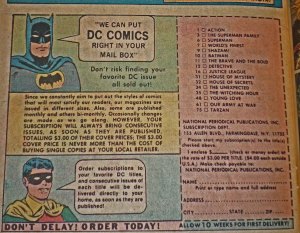Behold!

Jack Kirby leaving Marvel for DC is held by some (myself included) as the beginning of the Bronze Age. It is arguable, and some of the other dates and events have merit, but everyone agrees Kirby’s work at DC left an impact felt to this day (as was obviously his work at Marvel).
His creations in the early Bronze Age will battle the Justice League in their upcoming movie.
Kirby started the Fourth World mythos with the New Gods, Forever People, (taking over) Superman’s Pal Jimmy Olsen and Mister Miracle. Mister Miracle was the last surviving Fourth World book by the time of its cancellation in 1974 after 18 issues (Kirby left Jimmy Olsen some time before). By 1977 it was time to revive the super-escape artist with one of the best writers and one of the best artists of this or any age!
I won’t review the Fourth World books in this blog – it’s been done by others (and far better than I) and those reviews are easy to find online. Besides, I tend more toward the second (or third or lower) tier of comic books of the 1970s. By third tier I mean in terms of popularity and sales, certainly NOT quality!
***

Mister Miracle #19. September 1977
Cover: Marshal Rogers, Managing Editor: Joe Orlando, Editor: Denny O’Neil
“It’s All in the Mine”
Writer: Steve Englehart, Penciler: Marshall Rogers
Inkers: Marshall Rogers & Ilya Hunch (alias Crusty Bunkers: Dick Giordano, Mike Nasser, Al Milgrom, Jack Abel, Alan Weiss, Joe Brozowski, Terry Austin, Neal Adams).
Per DC Wikia: When Marshall Rogers realized that he was running out of time on the issue, he enlisted the aid of his friends, and assigned each of them a character in the story: Mister Miracle by Rogers, Barda by Giordano, Granny Goodness by Mike Nasser, Kanto by Milgrom, Highfather by Abel, Oberon by Al Weiss, Bedlam by Brozowski, Vermin Vundabar by Austin, and Mister Miracle’s eyes on page 1 by Neal Adams.
Colorist: Liz Berube, Letterer: Morris Waldinger
Per DC Wikia:
Granny Goodness and three of Mister Miracle’s other foes (Dr. Bedlam, Kanto and Vermin Vundabar) kidnap Big Barda from New Genesis, forcing Scott Free to become Mr. Miracle again. To rescue his new wife, he returns to Earth and reunites with Oberon, and the two go after Granny. She forces Scott to enter a deathtrap without his Mother Box, but when he escapes, he finds that his foes have left, and still have Barda with them. He deduces that they are now on the moon and he plans to follow them… continued next issue.
***
The letter column gives a brief history of the magazine and waxes philosophically on … escaping. It asks for letters and hypes upcoming DC comics.
***
This series is superb and never got the sales it deserved. Englehart and Rogers make a wonderful team – at this time they were also doing their six-issue legendary run on Detective Comics (the run that included the Joker Fish). The story is intriguing for this first issue – picking up where the last issue left off years before with Free’s and Big Barda’s honeymoon on New Genesis.
Marshall’s art is as wonderful as always – the characters look so real you think you are looking at a photograph. Barda never looked so beautiful. Not even the pencils and inks of Crusty Bunkers could hide his style!
An excellent start. This series will last for years!
Won’t it?
***
About the author: Michael Curry is the author of the Brave & Bold: From Silent Knight to Dark Knight, The Day John F Kennedy Met the Beatles and the award-winning Abby’s Road, the Long and Winding Road to Adoption and How Facebook, Aquaman and Theodore Roosevelt Helped. Check his website for more releases! Thanks for reading!



















